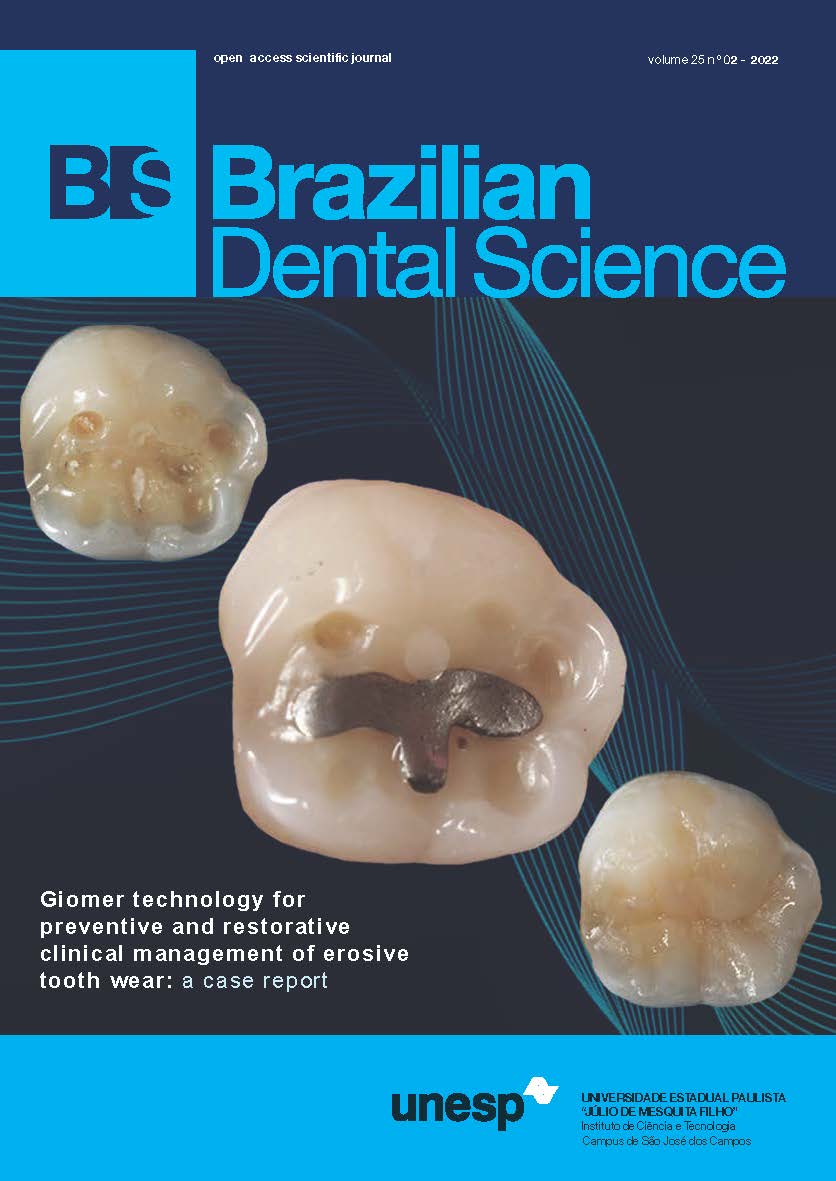Factors associated with root migration after lower third molar coronectomy - preliminary results
DOI:
https://doi.org/10.4322/bds.2022.e3055Resumo
Objective: The aim of this prospective study, with preliminary results, was to evaluate factors related with root
migration after lower third molar coronectomy, especially radiographic bone density. Material and Methods:
Twenty-two patients were submitted to 31 lower third molar coronectomies. Clinical and radiographic evaluation
of all patients were performed preoperatively and at 7, 90 and 365 days postoperatively. Sociodemographic,
clinical and radiographic data were collected. The root migration was analyzed by the distance from the tooth
apex to the mandibular canal, and radiographic bone density above the remaining roots was obtained, both using
the software Image J©. Results: After 1-year follow-up no patients showed paresthesia, symptoms or required
reintervention, however all roots showed migration. The mean root migration was 2.66 mm at 90 days, and
3.37 mm at 365 days (p = 0.0007). The rate of migration was higher at the early postoperative period. The simple
linear regression test between root migration and radiographic bone density was not significant (R=-0.173 and
p=0.453; R=-0.045 and p=0.902; at 90 days and 365 days, respectively) as well as the analysis between root
migration and other clinical and radiographic variables. Conclusion: It was possible to conclude, based on these
preliminary results, that all roots showed migration during the follow-up period. The radiographic bone density
increases and, consequently, the root migration rate diminishes within time, however none of the evaluated
factors showed significant association with root migration.
KEYWORDS
Bone density; Mandibular nerve; Third molar; Surgery oral.
Downloads
Downloads
Publicado
Como Citar
Edição
Seção
Licença
TRANSFERÊNCIA DE DIREITOS AUTORAIS E DECLARAÇÃO DE RESPONSABILIDADE
Toda a propriedade de direitos autorais do artigo "____________________________________________________________________" é transferido do autor(es) para a CIÊNCIA ODONTOLÓGICA BRASILEIRA, no caso do trabalho ser publicado. O artigo não foi publicado em outro lugar e não foi submetido simultaneamente para publicação em outra revista.
Vimos por meio deste, atestar que trabalho é original e não apresenta dados manipulados, fraude ou plágio. Fizemos contribuição científica significativa para o estudo e estamos cientes dos dados apresentados e de acordo com a versão final do artigo. Assumimos total responsabilidade pelos aspectos éticos do estudo.
Este texto deve ser impresso e assinado por todos os autores. A versão digitalizada deverá ser apresentada como arquivo suplementar durante o processo de submissão.




























